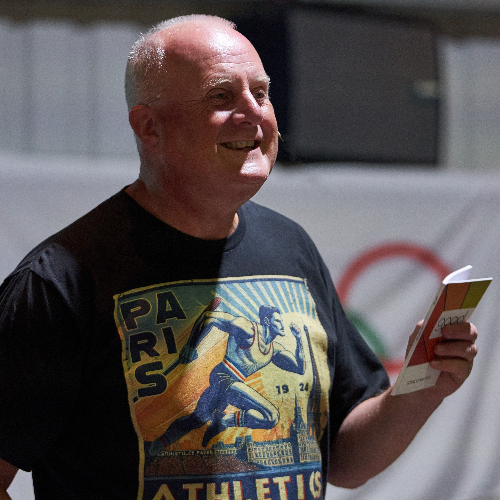-
The Basis Of Our Justification
Contributed by Gordon Curley on Jul 12, 2023 (message contributor)
Summary: The basis of our Justification - sermon by Gordon Curley (PowerPoint slides to accompany this talk are available on request – email: gcurley@gcurley.info)
SERMON OUTLINE:
• One man’s failure brought mankind’s fall (vs 12-14)
• One man’s fix bought mankind’s favour (vs 15-21)
SERMON BODY
ill:
• I have a list of opposites,
• I will give you a word and collectively shout out the opposite.
• Happy x sad
• Above x below
• Broad x narrow
• Ability x inability
• Import x export.
• Interior x exterior
• Optimist x pessimist
• Maximum x minimum
• Include x exclude.
• Majority x minority
• Superior x inferior
• Accept x refuse.
• Difficult x easy
• Bright x dim
• Acquire x lose.
• Ancient x modern
• Confess x deny.
• Admire x despise.
• Blunt x sharp
• Death x birth
• TRANSITION: This passage is about opposites, comparisons, contrasts.
• Adam and Jesus.
• Adam is a man of guilt and failure, and Jesus a man of grace and accomplishment.
Note:
• Most people today do not believe in a historical Adam and Eve,
• Because that would mean believing in the creation,
• When our schools, universities and media all teach evolution.
• When I was at school it was referred to as, ‘The theory of evolution.’
• They seemed to have dropped the words, ‘theory’ today and teach it as fact,
• But as far as I can see it has yet to be proven!
Quote: C.S. Lewis
“If you are really a product of a materialistic universe, how is it that you don't feel.
at home there?”
• As believers, we should hold a teleological viewpoint:
• That is, if something looks like it's been designed, there's a designer behind it!
• Wherever there is a thing, there must have been a preceding thought.
• Wherever there is a thought, there must have been a thinker!
• If a historical Adam does not represent mankind in sinfulness,
• Then a historical Jesus could never represent mankind in righteousness.
• One requires the other.
If you deny a real Adam,
• Then you will have problems with a number of important Biblical doctrines.
• And also, with Jesus and the apostle Paul who believed in a historic Adam and Eve.
• Consider the following passages that refer back to a historic Adam and Eve.
• e.g., Jesus affirms the special creation of Adam and Eve at the beginning.
• (Mark chapter 10 verse 6).
• e.g., Luke connects the human lineage of Jesus to Adam
• (Luke chapter 3 verse 38).
• e.g., Jesus links the doctrine of marriage to Adam and Eve
• (Matthew chapter 19 verses 4–6).
• e.g., Paul connects the doctrine of the church to Adam and Eve
• (Ephesians chapter 5 verses 30–32).
• e.g., Paul argues for family order because of Adam and Eve
• (1 Corinthians chapter 11 verses 8–12).
• e.g., Paul attaches the origin of sin in the world to Eve.
• (1 Timothy chapter 2 verses 13–14).
• e.g., Paul also connects death from sin to Adam.
• (Romans chapter 5 verses 12–14).
• It seems clear to me that the New Testament,
• Overwhelmingly affirms the historicity of Adam and Eve.
• If a historical Adam does not represent mankind in sinfulness,
• Then a historical Jesus could never represent mankind in righteousness.
• One requires the other!
In today’s Bible section the apostle Paul teaches by way of similarities and contrasts.
• In other words, Adam and Jesus are alike in some ways,
• And yet they are very different in other ways.
• i.e., They are alike in that each of them was the first of his kind.
• They were both sinless (one created perfect one conceived by the Holy Spirit)
• i.e., They are also alike in that great thing came from a single deed of each of them.
• (Human race through Adam and the family/race of believers through Jesus).
• Apart from these similarities, however,
• Adam and Jesus are as different as night and day.
• i.e., From Adam came the certainty of death.
• i.e., While from Jesus came the hope of resurrection to life.
NOW BEFORE WE DIVIDE THE PASSAGE UP UNDER TWO HEADINGS.
• Let me point out three key phrases in verses 12-21.
• Repetition is a good teacher, and the apostle uses it to highlight certain key truths.
• FIRST: note the repetition of the little word, “one”.
• It is used 11 times in these ten verses.
• The key idea is identification.
• We are identified with both Adam and Christ.
• e.g., we have one man, one sin, one trespass, one wrong choice.
• But we also have one man, one sacrifice, one right choice.
• Adam opened the door for corruption.
• Jesus opened the door to salvation.

 Sermon Central
Sermon Central



